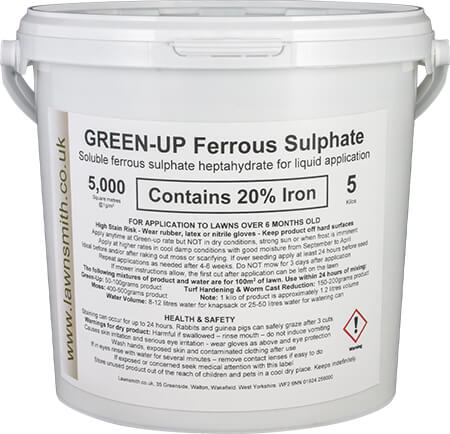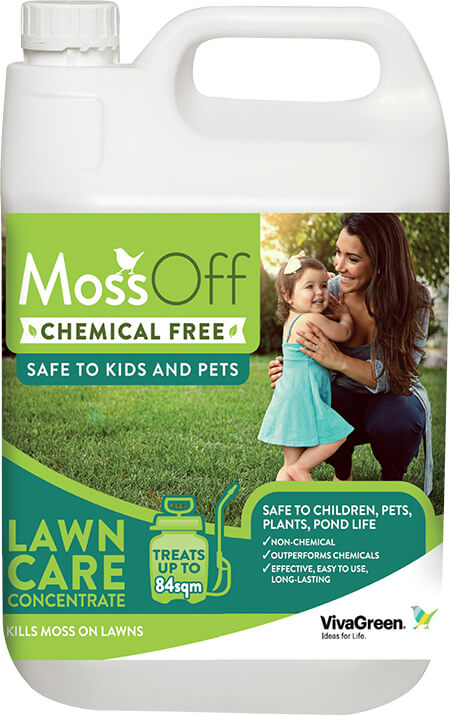
Moss Killer for Lawns
Iron or ferrous sulphate is the main moss killing compound and can be successfully used to slow moss growth and kill moss when removing it from the lawn
Using a moss killer is the next weapon to bring about a better lawn. Over the next few pages we will discuss the various ways you can control, kill and remove moss.
You can use moss killer as a standalone treatment to inhibit growth or as part of a moss removal programme. If the moss is not too overwhelming you can often keep it at bay or even reduce its spread by regular use of a moss killer.
Moss Products
Ferrous Sulphate
The traditional product and greenkeepers favourite moss control product is sulphate of iron; also known as iron or ferrous sulphate. Its chemical formula is FeSO4. It is the moss killing component of moss killers and lawn sand and is commonly sold in the green keeping industry as a fertiliser under the name of Ferrous Sulphate or Soluble Iron. It may also be combined with other elements and can therefore be used as a general fertiliser. Our high iron winter fertiliser called Winter Green is such a product.
The most common way of applying a ferrous sulphate based moss killer is to spray it in solution a week or two prior to raking out the moss. The moss is partially desiccated and is thus easier to remove. However, there are two other opportunities to use it that may make getting rid of moss easier and more efficient.
MossOff
This is a natural chemical free and works completely differently to ferrous sulphate. Because it is safe for use where pets and children may want to use the lawn after treating it is a useful addition to the lawnsmiths treatment program.
Use for Moss Suppression
Firstly we can use these products to inhibit moss growth so that we enter spring with considerably less moss had we not taken action. By applying these, usually by sprayer or watering can during the moss growth period, anytime from late autumn through to spring you will at least kill the exposed upper layer of moss. Though they are brilliant at killing moss they have their limitations when the moss is very deep. They will only penetrate 1 to 2cms into the moss so if you’ve got more depth than this the moss underneath may well remain alive. Therefore, if you know your lawn is prone to heavy moss infestations, starting your treatments in October before the moss gets too deep will be beneficial.
Even though the bottom layer of moss may remain alive, the killing of the top layer will stop light getting to the living bottom layer and the progress of the moss will be halted for perhaps 6 to 8 weeks. This is an easy and cost effective approach to moss control without the need for removal by raking, particularly if your lawn is not smothered. This treatment can be repeated every 4 to 8 weeks over the winter months if required.
If at the same time you have improved the local environmental factors a little, together with improved lawn care practices, you may well have made conditions more favourable for the grass. This together with a moss killer could bring about the desired result. If not, then the moss will have to be removed. See Moss Removal.
Use for Getting Rid of Moss
Secondly, you can use them after removal of the moss in the spring. Treating moss prior to removal will not kill all the moss; perhaps 20% to 50% will remain to re-infest your lawn. Therefore, if you treat what remains after raking you may well acheive upwards of 90% moss control. Ensure at least 4 weeks between applications if you are applying ferrous sulphate before and after raking. If you are overseeding, do this at least 24 hours after applying your moss killer.
Moss Killer Warnings
- Because these products acidify the soil you MUST use them uniformly over the whole lawn otherwise you will create pH variations which will affect grass growth and may even increase moss infestations in future years.
- At high concentrations ferrous sulphate will burn most plant leaves including grass so don't use it in dry, sunny or warm conditions.
- Do not use two products containing ferrous sulphate within the same 4 week period.

